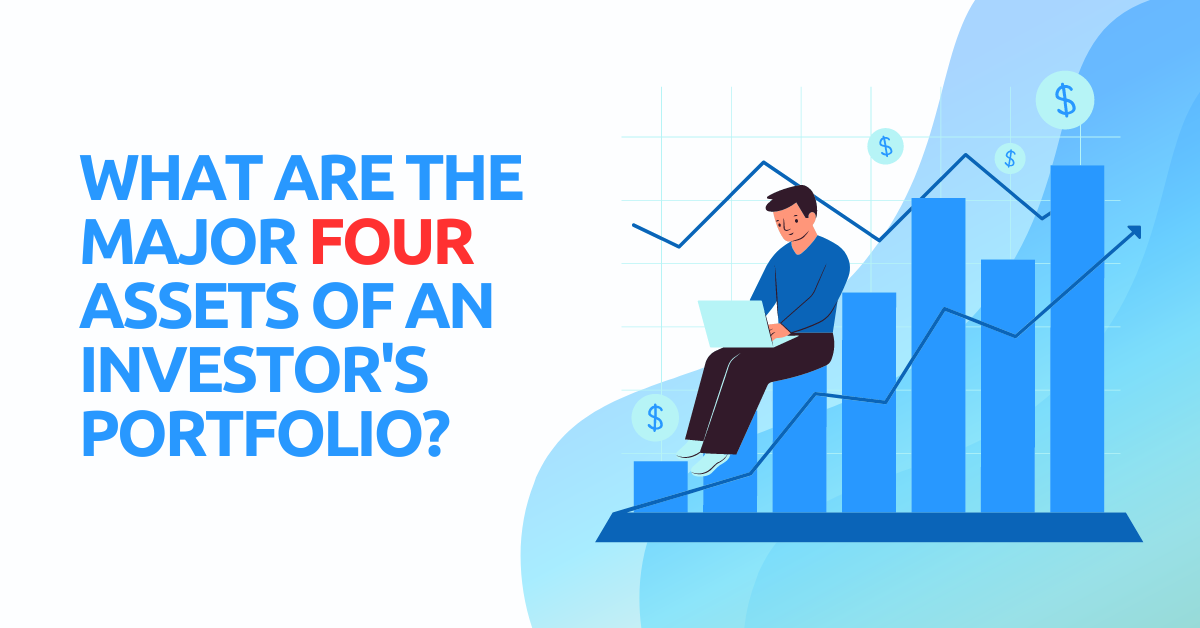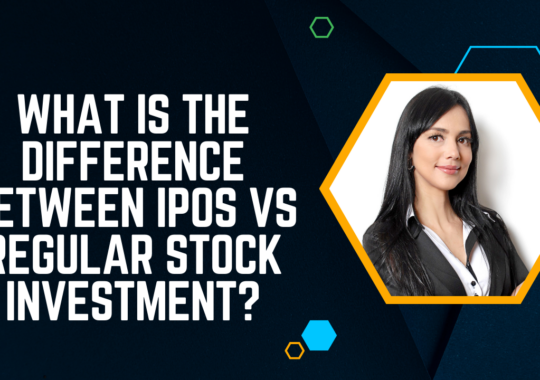If you’re new to investing, it can be overwhelming to decide where to start. There are so many options available that it’s hard to know which ones to choose. But don’t worry – learning about the core building blocks of a well-rounded investment portfolio can help simplify the decision-making process.
What is an investment portfolio?
Investment portfolios are composed of various asset classes such as stocks, bonds, real estate, cash, and others, with the goal of generating returns. The securities are diversified in a way that aligns with the investor’s financial goals and risk tolerance. Investment portfolios come in different types, including those integrated into 401(k)s, IRAs, and annuities, and those available through brokerage or financial advisor firms. Working with a financial advisor is an option for investors seeking expert guidance with their investments.
Take a look at Alternative Investment Funds: What Are They, and Who Regulates AIF?

In this article, we’ll discuss the four primary assets that are essential for any investor looking to build a solid portfolio. These assets are key to achieving long-term growth while also minimizing risk. Of course, there are countless investment options within each asset class, but we’ll focus on the most widely used and easily accessible choices.
No matter if you are a seasoned investor or just initiating, understanding the major asset classes is crucial for creating a successful investment strategy.
Let’s delve into the four major aspects of an investor’s portfolio!
Real Estate
Real estate, one of the four asset classes, is considered by some to be the riskiest but also has the potential for consistently higher returns. The risks associated with investing in real estate are actually the driving force behind these higher returns, and they include the risks of fluctuating interest rates, rental and leasing prices, and capital gains and losses during direct sales.
Read about 7 things to know before Investing in Real Estate
There are varying degrees of risk among different forms of real estate investing. For instance, investing $1.2 million into a commercial strip mall carries more inherent risk than investing in an eREIT fund.
However, despite these risks, investors are drawn to real estate for several reasons, including:
- the potential for higher returns
- portfolio diversification
- protection against inflation.
Stocks
Equities, commonly known as stocks, carry some risks when purchased, although not as much as real estate. There is no guarantee that the company whose shares are bought will continue to grow and remain profitable. However, a diversified stock portfolio generally outperforms other investment classes like bonds and money markets.
Do check out How to invest in stocks and shares for your kids?
The value of stocks is influenced by risk and reward factors, which include the potential for higher than average returns and the growth, profitability, and popularity of the company. However, emotional investing can significantly affect stock prices, as fear and greed can play a major role in determining the value and performance of a company’s stock.
Bonds(fixed income)
Fixed income investments, such as bonds, carry a relatively low level of risk, but risk still exists. As interest rates increase, bond prices may fall. Inflation can also impact bond prices, as it is tied to interest rates. However, an increase in interest rates does not necessarily guarantee a loss on a bond investment.
For example, if a bond with a 2.5% coupon rate is purchased when market interest rates are also at 2.5% and later sold when market rates rise to 3%, the return on investment would be lower than if interest rates had remained the same or decreased.
Despite the risks, fixed income investments offer relatively low rewards when compared to stocks and real estate. While there is a risk of the company defaulting on the bond, corporations that issue bonds are typically large conglomerates that are not at risk of failing.
Cash
Cash equivalents and money markets are the lowest risk asset classes among the four. While your money is relatively safe, the potential reward is inherently low compared to other investment options. However, it’s important to note that low risk does not mean zero risk.
Click here to know about 4 Money Transfer Apps To Use When You Need Cash Fast
Even holding onto cash can have risks involved, such as inflation that can lessen the value of your cash or the risk of a bank going under, requiring you to rely on FDIC insurance to recover your lost funds.
Despite the low potential for reward, it’s still a wise decision to include cash equivalents and money markets in your investment portfolio. Having a sufficient cushion for unexpected expenses can be beneficial in times of financial need.
FAQs
What is the risk vs. reward potential for real estate investing?
In real estate investing, the potential for risk and reward is high. Although it is known to be the most precarious among the four asset classes, it also provides the best opportunity for achieving consistently higher returns.
What is the lowest risk asset class, and what are some of the risks involved?
Cash equivalents and money markets are considered the lowest risk asset class, but they are not risk-free. Holding onto cash carries certain risks, including the potential for inflation to reduce the value of your money or the risk of a bank failing and relying on FDIC insurance to recover lost funds.
Can investing in just one asset class lead to a successful investment portfolio?
Limiting your investments to just one asset class can increase the risk and reduce potential returns. It’s important to have a diversified investment portfolio across multiple asset classes for long-term success.
How can diversification help mitigate risk in an investment portfolio?
By diversifying an investment portfolio across different asset classes, an investor can mitigate risk and balance potential returns. This is because spreading out investments can help to reduce the impact of any losses in one asset class and provide more stable long-term growth.
Can an investor change their investment strategy over time and move their assets into different asset classes?
Certainly, investors have the flexibility to modify their investment strategy over time and reallocate their assets across different asset classes. They can achieve this by divesting assets in one class and reinvesting the proceeds in another class.
What are some resources available for learning more about investing in these four asset classes?
One can find numerous resources to learn more about investing in the four major asset classes, including online courses, investment books, financial advisors, and investment forums.
Conclusion
So, there you have it – the major four asset classes that an investor can consider for their portfolio. As you’ve learned, each asset class has its own set of risks and rewards. Real estate and stocks carry high risk and high reward potential, while bonds and cash equivalents are comparatively low risk and low reward options. As every investor has different investment goals, it’s crucial to choose an investment strategy that aligns with those goals.
One of the most important takeaways is the significance of diversification for a successful investment portfolio. Diversification can help balance potential returns and mitigate risks. Whether you’re a beginner or an experienced investor, it’s crucial to consider how these four asset classes can fit into your investment strategy and help you achieve your financial objectives.
So, take your time and explore your options – and remember, happy investing!



